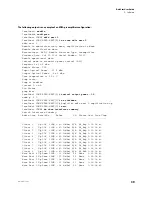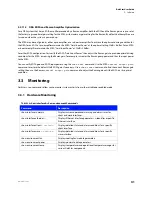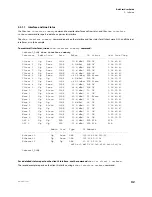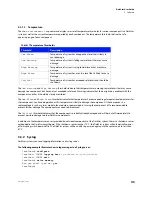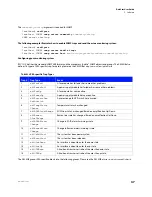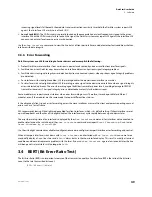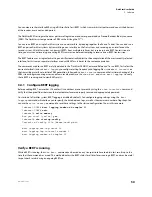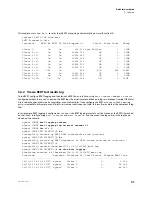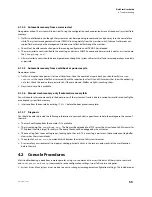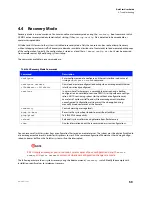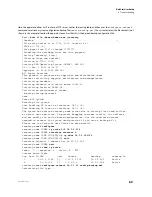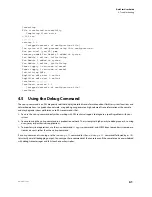
52
DarkStar User Guide
3: Software
www.xkl.com
08/10/12 18:13:12 UTC, myhost, Client 1, 0, 72.384
08/10/12 18:13:42 UTC, myhost, Client 1, 0, 96.512
In a similar example without the
verbose
option, BERT logs the initial sample, and shows a count (x4) of the number of
samples where Total Errors is unchanged from its initial value of zero.
labcons32-10X CONF-INT-CLIENT[1]#
do show bert logging
Displaying contents of /home/bert/08-23-12_192911Z_bert.log
Timestamp, Hostname, Interface ID, Total Errors, Elapsed BERT Time
---------------------- --------- ------------- ------------- -----------------
08/10/12 18:11:42 UTC, hostname, Client 1, 0, 0.000
4 samples since last log recording
3.4.3 Determining BERT Minimum Test Time
Extending the BERT test time increases the statistical level of confidence in the BER measurement. This table shows the BERT
minimum test time, in seconds, needed to verify a BER of 10
-12,
at 85%-99% levels of confidence, for a SONET and a 10GE link.
FIGURE 3.5
BERT test times required for BER < 10
-12
From the table, on a SONET link at 9.953Gbps, BERT test time needs to be at least 301 seconds in order to be 95% confident
that its BER is better than 10
-12
.
In general, you calculate the minimum BERT test time by determining the required transmission bit count, then dividing it by
the bit transmission rate. As an example, for the 10GE link at 95% confidence, if:
•
n
= the required transmitted bit count
•
ln
= the natural logarithm function
•
PE
= the target BER (e.g. 10
-12
)
•
C
= the required confidence level (e.g. 95% = 0.95)
•
b
= the bit transmission rate in bps.
•
TRT
is the BER test time in seconds
then
•
The transmitted bit count
n = ( ln(1-C) )/PE bits
(in the example, n = ln(0.05)/1x10
12
= 2.995 x 10
12
bits)
•
And the BER test time
TRT = n/b seconds
(in the example, TRT = 2.995x10
12
/ 10.312x10
9
= 290.5 seconds)
Bit Rate (Gbps)
C = 99%
C = 95%
C = 90%
C = 85%
9.953 (SONET)
463
301
232
193
10.312 (10GE)
447
291
224
184


